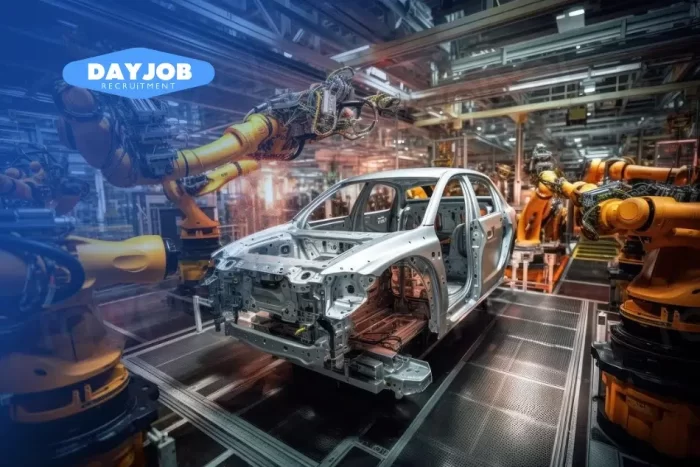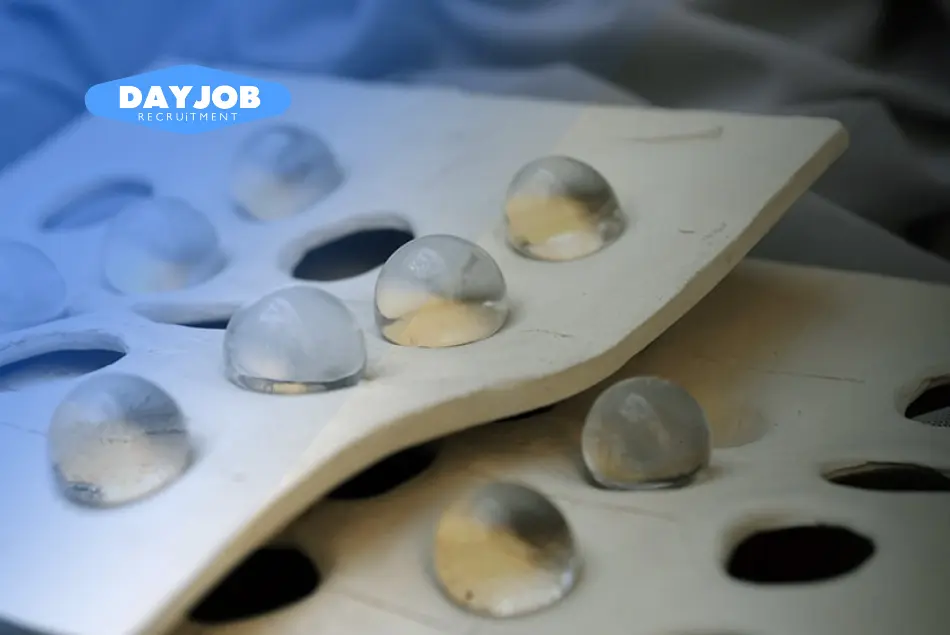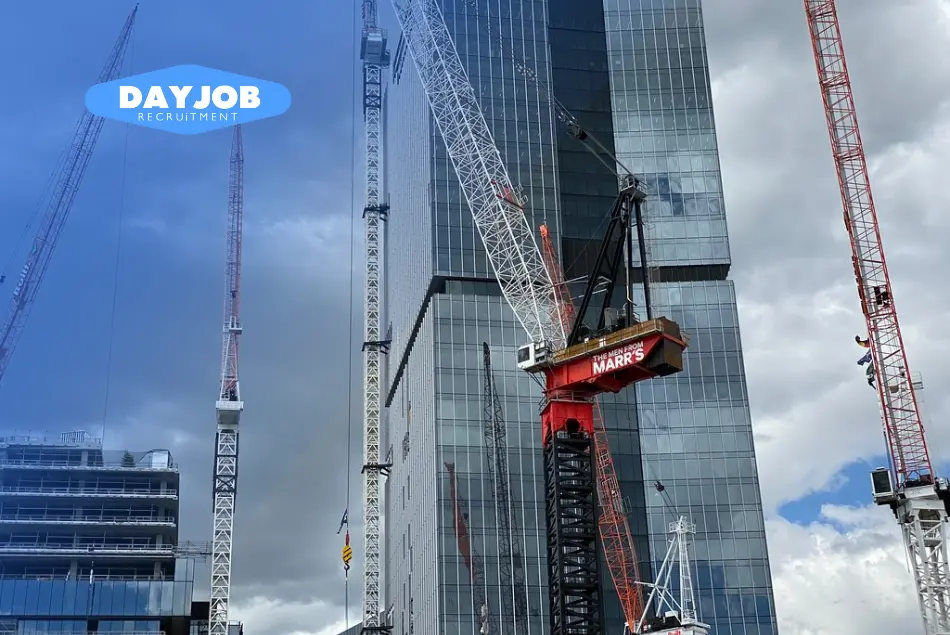In 2023, the metal fabrication industry in Australia, a vital component of the manufacturing sector, is valued at $3.7 billion. This figure, however, represents a 6.95% decline from the previous year, reflecting the industry’s current challenges and the urgent need for adaptation and innovation. Amidst this backdrop, the sector stands at the forefront of a significant transformation. Driven by technological advancements and shifts in the global market, metal fabrication is poised for a resurgence.
This article explores the emerging trends and cutting-edge technologies set to revolutionize the industry, underlining the importance of strategic adaptation for future growth and resilience.
Historical Evolution: From Past to Present
Metal fabrication, an age-old craft, has seen remarkable evolution globally, specifically in Australia. The journey began in 1840 when significant iron deposits were discovered in Iron Knob, South Australia, marking the birth of the Australian steel industry. However, the industry’s growth was initially slow due to a lack of knowledge and resources.
The pioneers in the industry were able to produce pig iron. The technology and expertise required to convert pig iron into high-quality steel were not readily available in many places.

GOOD TO KNOW
What is Pig Iron?
Pig iron (also known as crude iron) is a primary product of iron smelting in blast furnaces, characterized by its high carbon content, which ranges from 3.8% to 4.7%. Due to its brittleness and the presence of impurities like silica, pig iron is not directly usable in most applications but is a crucial intermediate in the steel-making process and in creating wrought iron through traditional methods such as finery forges and puddling furnaces.
How it Started
It was not until 1901, when Australia’s first blast furnace opened that the steel manufacturing sector truly ignited. This development was crucial in building the nation’s infrastructure, including railway lines, and was integral to machinery and manufacturing advancements.
Image Source: Lithgow Tourism
From the 1960s to the 1980s, Australia’s steel production surged from 4.6 million to 10 million tonnes, driven by post-war rebuilding efforts and national development. However, this rapid growth also increased global competition, especially from Asia, prompting Australian industry leaders to innovate for improved efficiency and sustainability.
Today
Today, the Australian steel industry has overcome numerous challenges and is a reliable and profitable sector pivotal to transport infrastructure and manufacturing. Most steel in Australia is now manufactured overseas and then processed and fabricated locally. The mild steel industry continues to evolve, embracing more sustainable and environmentally conscious practices, indicative of a global shift towards greener manufacturing methods.
In 2023, the Australian steel industry generated 29 billion in annual revenue and employed around 140,000 people.

This rich history underscores the continuous adaptation and technological advancements that have shaped metal fabrication, setting the context for understanding the significance of emerging trends and their potential impact on the industry’s future.
Industrial Technologies to Watch Out For
1. Enhanced Collaborative Robotics and Human-Robot Interaction
Collaborative robots, or cobots, are increasingly being integrated into metal fabrication. Unlike traditional robots, cobots are designed to work alongside humans, assisting in tasks like welding, cutting, and drilling.

MarketsandMarkets report states that the collaborative robot market was valued at USD 1.2 billion in 2023 and is estimated to reach USD 6.8 billion by 2029. This indicates a Compound Annual Growth Rate (CAGR) of 34.3% during the forecast period. The growth is driven by increased demand in e-commerce and logistics industries and a high return on investment compared to traditional industrial robotic systems.
Here is one example of this technology. The Universal Robots UR5e is a lightweight, versatile collaborative robot designed for medium-duty applications in industrial environments. It is known for its ease of use, adaptability, range and flexibility. The UR5e can perform tasks like welding and cutting with a payload of up to 5 kg and a reach radius of 850 mm.
2. Advanced 3D Printing and Additive Manufacturing
3D printing, or additive manufacturing, transforms metal fabrication with its ability to create complex geometries and shape custom parts. Techniques like metal powder bed fusion are at the forefront, offering high precision and minimal waste, as unused material can be reused.

Image Source: European Space Agency
The global market for 3D printing metals was valued at USD 772 million in 2019 and is projected to reach USD 3,055 million by 2025, growing at a CAGR of 28.8%.
The EOS M 290, utilizing Direct Metal Laser Sintering (DMLS) technology, is an innovative metal 3D printer tailored for cost-effective and precise production. With a spacious build area of 250 x 250 x 325 mm, it excels in delivering intricate components for innovative metalwork production.
3. Smart CNC Machine Automation
Integrating automation in Computer Numerical Control (CNC) machines is a game-changer, enhancing precision and reducing manual intervention. This automation lowers the risk of injuries and improves operational efficiency. It also allows workers to focus on more complex and creative tasks.

Smart CNC machines integrate edge computing devices, which are ruggedized industrial PCs designed to run in manufacturing environments. These devices process data from shop floor machines and provide valuable insights or information back to the machine, enhancing efficiency and quality and reducing the computational burden on the CNC controller.
4. IoT and Industry 4.0 Integration
The Internet of Things (IoT) and Industry 4.0 are revolutionizing metal fabrication with enhanced connectivity and data analytics. This integration facilitates predictive maintenance, increases machine lifespan, and improves efficiency through real-time data monitoring and analysis.
Image Source: Science Direct
Integrating IoT and Industry 4.0 in metal fabrication involves the evolution towards autonomous, self-learning, and self-correcting systems, where machines become more self-reliant, and humans handle exceptions. An example of this integration is seen in comprehensive, flexible manufacturing systems (FMS) with storage, retrieval towers, and robotic offloading automation, working towards fully autonomous manufacturing.
5. Integration of CAD/CAM Technologies
Computer-aided design (CAD) and manufacturing (CAM) are becoming increasingly prevalent, offering high precision and efficiency. Integrating digital technologies boosts automation, while detailed modeling and simulation reduce errors and material wastage.
Other Industrial Emerging Trends
A. Sustainable Manufacturing Practices

As environmental awareness rises, there is a growing trend towards sustainable and green manufacturing practices in the sheet metal and fabrication industries. These practices include utilizing recycled materials and adopting energy-efficient processes.
Steel Dynamics, Inc. has embraced sustainable practices in the steel industry. The company is committed to operating in an environmentally responsible manner, targeting a 20% reduction in greenhouse gas emissions intensity across its electric arc furnace (EAF) steel mills by 2025 and a 50% reduction by 2030, compared to a 2018 baseline.
B. Augmented Reality (AR) in Training and Operations
AR is being explored for its potential in training personnel and enhancing operational accuracy, offering immersive, real-time guidance and visualization.
Boeing uses AR workflows, guidance tools, and videos to increase speed and decrease errors in aircraft wiring assembly. Their AR deployment allows technicians to use voice commands and gestures for instruction prompts, enhancing the assembly process efficiency and accuracy. The use of AR in wire harness assembly showed a 25% increase in speed
C. Digital Twin Technology
Digital twins – virtual replicas of physical systems – are emerging in metal fabrication for process optimization and predictive analytics.
By embracing these trends, Australia’s sheet metal fabrication industry can enhance efficiency, precision, and sustainability, positioning itself for continued growth and innovation.

Image Source: Siemens
Siemens offers technology to help manufacturers create comprehensive digital twins. These digital twins can be used to design, simulate, and measure the performance of a product or process even before building a factory, leading to increased speed to market and improved product and assembly process refinement over time.
Current Challenges: Navigating Industry Hurdles
Today, the metal fabrication industry in Australia faces several pressing challenges:
Labour Shortages
The industry is grappling with a significant skills gap. An aging workforce and a lack of skilled newcomers create labour shortages that threaten growth. This situation calls for a strategic approach, including investment in training and leveraging automation to fill the gap.
Recognising the skills gap and labour shortages, we focus on connecting skilled professionals with the industry. We seek to bridge the gap between aging workforces and the need for new talent by providing access to a pool of qualified and trained individuals ready to contribute to industry growth.
Environmental Concerns
As global awareness of ecological issues rises, the industry is under increasing pressure to adopt sustainable practices. This includes minimizing waste, using eco-friendly materials, and investing in cleaner technologies. These challenging changes present an opportunity to innovate and lead in green manufacturing.
We understand the increasing need for sustainable practices. By partnering with companies that prioritise eco-friendly methods and cleaner technologies, we aim to facilitate a shift towards green manufacturing, aligning workforce solutions with environmental responsibility.
Supply Chain Issues
Recent global events, including the COVID-19 pandemic, have highlighted the vulnerability of global supply chains. Fluctuating material costs, uncertain equipment availability, and logistical challenges are prompting a reevaluation of supply chain strategies, with a growing focus on resilience and local sourcing.

In response to supply chain vulnerabilities, Dayjob Recruitment is poised to support the industry’s move towards resilience and local sourcing. By offering recruitment solutions emphasizing local talent, we help companies stabilize their operations and adapt to fluctuating market and business conditions.
Dayjob Recruitment is dedicated to meeting these challenges head-on, ensuring the metal fabrication industry in Australia not only survives but thrives in these changing times.
Impact of Automation: Reshaping Metal Fabrication
Automation is revolutionizing the metal fabrication industry, leading to significant changes in manufacturing processes. Integrating robotics and AI-driven systems enhances efficiency and precision while reducing the need for manual labour in repetitive and high-risk tasks.
This shift is not just about replacing human labour; it’s about augmenting human capabilities, leading to safer work environments and more innovative manufacturing approaches. Automation also addresses labour shortages, allowing for continuous production and meeting the increasing demands of various industries.
Future Skills and Education: Preparing the Workforce

Education Requirements and Vocational Training
- A Certificate III in Engineering (Fabrication Trade) is required to work as a Metal Fab
- ricator in Australia.
- Vocational education and training (VET) programs prepare the workforce for industry changes.
STEM Education’s Growing Importance
- Weld Australia has highlighted the need for industry, schools, and governments to collaborate in developing and delivering STEM programs that engage students and illuminate career opportunities in fields like welding and manufacturing.
- The employment market in Australia is shifting, with a growing shortage of skilled labourers in sectors like welding and fabrication. This trend is illustrated by large-scale projects such as the Federal Government’s $90 billion Naval Shipbuilding Program and significant infrastructure projects like the Sydney Metro and Melbourne Airport Rail Link.
Addressing the Trade Workers‘ Shortage
- The number of welding trade workers in Australia dropped by 8% from 2014 to 2019. Additionally, the completion rates of welding apprenticeships are falling significantly, underscoring the need for more skilled and qualified tradespeople with in-depth STEM skills.
- The Federal Government’s Department of Education, Skills and Employment predicts that future workers will spend more than twice as much time on job tasks requiring science, maths, and critical thinking.
Innovative Training Programs
An example of innovative training is the pilot program initiated by the New South Wales Department of Education and Training in June 2020. This program, aimed at high school students, employed augmented reality welding simulators and innovative teaching methods. Its success led to its expansion, highlighting the effectiveness of modern training techniques in addressing skill shortages.
Discover your ideal job match!
Conclusion
The metal fabrication industry is evolving rapidly, with automation and sustainability shaping its future. For Australia, this means both challenges and opportunities. As the industry embraces these changes, staying informed and adaptable will be crucial for success. The future of metal fabrication is bright, with immense potential for innovation and growth.
Are you passionate about joining the metal fabrication industry? Dayjob Recruitment is here to open doors for you. We offer a gateway to many roles in Australia’s leading manufacturing and construction companies. Your next opportunity is waiting, from CNC operators and welders to engineers and forklift drivers. And for employers, our commitment is to connect you with the top talent in the trade.
Start your journey today — explore our latest job listings or submit your resume to secure your place in the future of metal fabrication.
Is this the role you’ve been waiting for?
FAQs
Q: What qualifications are needed to become a metal fabricator in Australia?
A: A Certificate III in Engineering (Fabrication Trade) is typically required to work as a metal fabricator in Australia. This qualification ensures proficiency in various skills, including stick welding, laser cutting, and working with stainless steel and plate metal materials.
Q: How are metal fabrication companies adapting to the shortage of skilled labour?
A: Metal fabrication companies increasingly focus on advanced training programs, including STEM education, to address the skills gap. These programs often cover techniques like waterjet cutting, metal folding, and the use of welding wire in construction projects.
Q: What technological advancements are influencing steel fabrication services?
A: Innovations like laser and waterjet cutting are revolutionizing steel fabrication services. These technologies allow for precise cutting of raw materials, enhancing the final products’ efficiency and quality.
Q: What role do raw materials play in metal fabrication?
A: Raw materials, including stainless steel, plate metal, and welding wire, are crucial in metal fabrication. The quality of these materials significantly impacts the efficiency and effectiveness of processes like stick welding and metal folding.
Q: Are there new trends in handling construction projects in the metal fabrication industry?
A: Metal fabrication companies now employ advanced techniques like laser cutting and waterjet cutting for construction projects. These methods provide precision and efficiency, crucial for complex architectural designs and large-scale constructions.
Q: How are recent supply chain issues affecting metal fabricators in Australia?
A: The metal fabrication industry, including Australian metal fabricators, has been impacted by global supply chain disruptions, particularly due to COVID-19 and other events from 2021 and 2022. These disruptions have led to widespread shortages of essential raw materials and goods, influencing production timelines and costs.
Inflation rates and changes in demand have also affected the industry, with some vendors offering discounts on surplus inventory to mitigate the impact of continual raw material depletion.
Q: What new manufacturing techniques are emerging for metal fabricators?
A: Recent innovations in the metal fabrication industry include the rise of rapid prototyping and a boom in 3D printing. Rapid prototyping allows metal fabricators to create accurate digital models for testing and refining before mass production, leading to more precise fabrication and less waste.
3D printing, or additive manufacturing, is increasingly being used for its ability to develop complex designs with intricate geometries quickly and cost-effectively, using sustainable materials. These techniques are becoming standard in high-quality manufacturing due to their efficiency and eco-friendliness.
Do you know the perfect candidate for the job? Refer and start earning today!








